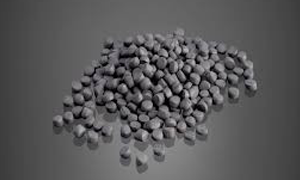- Home
- >
- News
- >
- Company news
- >
- Problems and Defects of MIM
Problems and Defects of MIM
If there are advantages, there must be disadvantages. MIM injection molding will have special advantages in a certain aspect, such as production efficiency, production cost, or parts with geometric patterns produced, etc., but the disadvantage is that the parts produced are limited in volume, or Cracking, holes, short shots, jetting, poor mold opening, flashing, surface bubbles, formation of weld lines and surface depressions, poor control of bending and dimensional accuracy, etc. These problems can be eliminated by adjusting the interrelationships of time, temperature and pressure during the injection process.
The most important part of injection molding is the powder mixing process in the early stage. If there is a problem in the mixing, it will not be easy to make up for the shortcomings caused by the mixing in the later stage. For example, when agglomeration occurs in the mixing, it will cause unstable filling, and there will be obvious problems in the injection process of MIM powder products.
The next step is to pay attention to the strength and density of the green part. The occurrence of pressure gradients during the hardening of the shaped compact causes slight density gradients which are the cause of sintering deformation. The density gradient at the gate is large, especially when the compaction process is not designed properly, and when the solid powder content exceeds the critical value, there is a greater tendency to have defects in the green part.
Powder metallurgy manufacturers usually have their own mold making department. When making molds, there is usually an air outlet to prevent air from staying in the green part. The quality of the surface polishing of the mold affects the burr and flash of the green part. In injection molding, flash can stick to the mold. Another most common problem is short injection, which is caused by the solidification of the mixed powder before injection molding.
The problem of uneven surface is also a defect of injection molding. The reason is that during the injection molding process, the feeding material is insufficient to fill the cavity. When the feedstock is insufficient, there is not enough powder mixing in the cavity. Shrinkage occurs during cooling. This problem can be solved by reducing the temperature, increasing the injection speed and modifying the pressure distribution of the density.
The injection molding injection speed is conducive to filling the cavity, but in practice the injection speed is difficult to achieve because the feed material is relatively viscous and dense. Flow resistance along the flow path can be reduced by eliminating nozzle valves and increasing the size of runners, and gates. A better choice is to inject along the mold line, which avoids changing the flow direction at the intersection. Once the flow direction is changed, the resistance increase, and bring the problem of binder and powder separation.
The flow direction of some injection molding powders has changed, while others have not changed, so the direction of movement is not uniform, resulting in different densities of powder metallurgy green parts formed by feedstock materials in the cavity. Here are just a few problems in MIM injection molding. Of course, a good powder injection molding green part needs to be strictly controlled in all aspects before it can be completed. The control of the existing injection molding machine provides the functions required for molding such as pressure, shear rate, temperature, measurement and action. In the future, injection molding will be applied in various fields of life. At present, we are familiar with the automotive field, medical field, Injection molding has been popularized in communication fields, etc.






